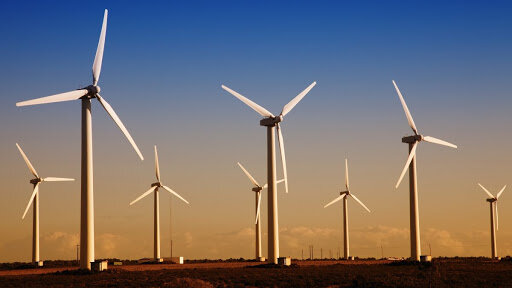Protecting the environment with renewable energy

TEHRAN – Today, the use of renewable energy such as wind is one of the main options for energy production in the world, Iran should produce a thousand megawatts of wind energy per year, according to the Sixth Five-Year National Development Plan (2016-2021).
Wind, as a source of clean energy, can play an important role in energy production and reducing the use of fossil resources. It also produces less pollution and greenhouse gases.
At the end of 2010, the nominal capacity of wind power generation worldwide was equal to 197 GW, today the capacity of wind power in the world is 487,000 thousand MW, while the capacity of our country’s power plant is 75,000 MW, of which only about 140 MW includes wind energy and the share of solar energy is less or close to zero.
Denmark, meanwhile, holds the world record for wind energy production in 2019, meeting 47 percent of its electricity needs from wind energy, of which 47 percent is wind power, 29 percent is offshore energy and 18 percent is another source.
Resources provided, the country of about 6 million people, is surrounded by water and have the favorable condition and high renewable potential.
Meanwhile, Germany is a leading country in this field.
Historically, Iran is one of the leading countries in the use of wind energy in windmills, but the first modern and industrial use of wind power in Iran was started in 1955 when two modern wind turbines with a capacity of 500 KW were purchased and installed in northern Gilan province.These conditions are also suitable for a country like Iran because it is surrounded by water from both the north and the south where the wind is constantly blowing every year, for example, 120-day winds in Sistan-Baluchestan province.
Kahnooj hot winds, Manjil winds, Raz or Shareh winds in Qazvin province, Na’eshi winds, and Tash winds in Hormozgan province are some of the winds that always blow in different parts of the country.
According to the National Development Plan, Iran also plans for renewable energy and focuses on wind energy.
However, historically, Iran is one of the leading countries in the use of wind energy in windmills, but the first modern and industrial use of wind power in Iran was started in 1955 when two modern wind turbines with a capacity of 500 KW were purchased and installed in northern Gilan province, after which the government decided to develop wind energy in the country.
Currently, the capacity of wind farms in Iran is 302 MW, while the economic potential of the construction of such power plants is more than 7,000 MW, which certainly can be very effective and useful in managing the peak of the electricity load in the country.
The first document related to the development of clean energy was prepared by the Renewable Energy and Energy Efficiency Organization with the assistance of the World Bank. In addition to this document, based on the 20-year National Vision Plan, Iran must establish an annual 90 MW wind farm by the end of 2025.
According to the Sixth Five-Year National Development Plan, 1,000 MW per year and a 75 MW wind power plant must be installed in the country every month not to lag behind in development. The share of wind energy in the world is increasing, so we must move faster and plan more.
In Iran, despite having significant capacities, unfortunately, wind and solar energy use are not satisfactory compared to other countries, the countries of the Persian Gulf have also started very extensive measures in this field. The United Arab Emirates and Saudi Arabia are launching cities that use all their energy from renewable energy sources, or Ethiopia has installed 230 MW wind farms, which is twice above our country’s amount.
However, we are still witnessing the country lagging behind in the field of renewable energy production, so that according to the Sixth Development Plan, 5,000 MW of wind power should be built in the country, which has not been done yet. Accordingly, we have to launch an average wind farm with a capacity of 75 MW per month, while we are far behind.
However, Iran is not in good condition in terms of environmental and biological components and is very fragile, greenhouse gas emissions and air pollution due to the use of fossil fuels have not only threatened the environment but also affected health.
Wind energy as a source of clean energy is one of the most economical methods of generating electricity that does not cause pollution and is also inexhaustible, according to studies, the production of each kilowatt-hour of electricity from wind in comparison with fossil fuel power plants can prevent the release of about one kilogram of CO2. On the other hand, when electricity generated from wind energy is injected, the same amount of environmental pollutants is reduced.
Of course, Iran has several wind farms, but despite its unique capabilities, it must take longer and faster steps in this area to help the economy, health, and fragile environment.
FB/MG

Leave a Comment